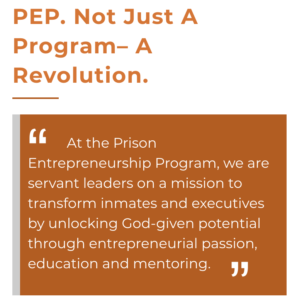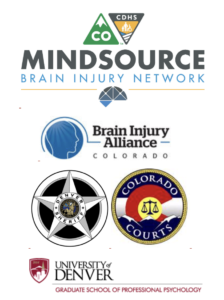Federal Prison Policies
The United States Federal Government should significantly reform its policies regarding convicted prisoners under federal jurisdiction.
NCFCA debaters have a small slice of the US prison population and policies to research and reform through the coming debate season. Some 150,000 federal inmates according to the Federal Bureau of Prisons. So for those 150,000, what are current USFG policies and how might they be reformed?
Prison Fellowship notes 40,000 federal prisoners are released each year and half arrested again. So improving rehabilitation to reduce recidivism seems like a valuable reform goal.
• FEDERAL PRISON AND SENTENCING REFORM
Each year about 40,000 federal prisoners are released, but about half will be arrested again within three years. The revolving door of criminal justice is devastating to families and depresses economic activity in many communities. We owe it to the communities most affected by crime and incarceration to ensure that federal prisoners have the greatest possibility for rehabilitation while in prison and success upon release.
However the federal government has history of failed job training programs both inside and outside prisons. On general federal job training, see So far, federal job-training programs have been outright failures (The Hill, March 14, 2017) on the study “Workforce Investment Act (WIA) Gold Standard Evaluation”:
Specifically, the study found that the programs are largely ineffective at raising participant’s earnings and are offering services that don’t meet the needs of job seekers or employers.
While the evaluation assessed the programs for adults and dislocated workers, it did not assess programs for youth. This omission is unfortunate. Then again, other scientifically rigorous evaluations have already found youth job-training programs to be ineffective.
Also a Heritage Foundation report: Federal Job Training Fails Again (March 10, 2017). And New York Times story $1.7 Billion Federal Job Training Program Is ‘Failing the Students’ (August 26, 2018). Maybe federal job training programs used to work? Here is classic James Bovard study from 1986: Cato Institute Policy Analysis No. 77: The Failure of Federal Job Training
How about learning in federal prisons? The Marshall Project story What Are Inmates Learning in Prison? Not Much. (May 31, 2017), begins:
Crocheting. How to play bridge or the game show “Jeopardy.” Tips on reviewing movies.
Those are the continuing education options one inmate described in a new survey of 2,000 federal inmates that offers an inside look at how U.S. prisons fail to teach useful skills to help ease the path back home.
“No one ever fails any class,” said another inmate. “Everyone receives a certificate, whether you attend every class/study for hours or just come in at the beginning, sign in, and leave. The certificates really don’t mean anything when you do it that way.”
Executive Order Prompts BOP to Expand Prison Apprenticeship Programs (Prison Legal News, March 5, 2019) reports on a 2018 Trump Administration executive order “to expand apprenticeship programs for federal prisoners.”
While most prison work programs fail to provide prisoners with transferable skills they can use once they get out, apprenticeships offer more meaningful job training. Given how successful apprenticeships have been for participants in general, they may help prisoners in a more realistic way than existing prison work and vocational programs.
Federal Prison Industries, now called UNICOR, has a webpage with program information.
UNICOR is the trade name for Federal Prison Industries (FPI), a wholly owned Government corporation that was established by Congress on June 23, 1934. Its mission is to protect society and reduce crime by preparing inmates for successful reentry through job training. UNICOR is entirely self-sustaining, receiving no appropriated funds from Congress and operating at no cost to taxpayers.
So maybe UNICOR programs in federal prisons could be improved. Critical is this 2016 NBC News story Federal Prison-Owned ‘Factories With Fences’ Facing Increased Scrutiny. The UNICOR website (link above) says its programs operate at no cost to taxpayers. The NBC story says:
The company has also, for at least five years operated at a net loss of $89.8 million, according to the Justice Department, requiring the corporation to draw on its cash reserves.

Prison Entrepreneurship Program (PEP) offers a business training model with successful track record. From the PEP Empowering Innovation page:
At PEP, innovation is critical to empowering our clients. It is key to the program’s results. The very structure of our program, the education, the mentoring and the continued post-release support are innovative.
Our culture promotes innovation. PEP does things that no other organization can match and our results are second to none. From our detailed candidate selection process to our in-prison leadership academy and mini-MBA boot camp to the real and very competitive business plan competition to the post-release support structure, every part of our program is carefully designed to provide our men the skills to be successful upon release from prison.
Recent PEP news: Prison Entrepreneurship Program signs 11K-SF lease in East End Maker Hub (HoustonInno, June 29, 2021)”
Prison Entrepreneurship Program, a Houston-based nonprofit that connects executives, entrepreneurs and MBA students with convicted felons to prevent recidivism, has signed a lease in the Houston area’s largest coworking makerspace.
See also this 2016 Urban Institute report: Transforming Prisons, Restoring Lives: Final Recommendations of the Charles Colson Task Force on Federal Corrections
Nutrition and mental health notes for federal prison reform
Switching from work and entrepreneurship training to health issues. Federal prison policies regarding nutrition, health, and mental health should be reformed. Here are some initial areas to consider:
• America’s Prison Food Is Still Criminally Awful (Reason.com, December 12, 2020). Though most examples are from state prisons.
• Studying the state of food in the nation’s prisons–and seeking to transform the experience of eating inside
https://impactjustice.org/impact/food-in-prison/#report
Eating Behind Bars: Ending the Hidden Punishment of Food in Prison is the first national investigation of its kind. This six-part report explores the inequities and troubling trends in prison food, centering the perspectives of people who have been incarcerated while also examining food services policies and practices that affect more than 1.3 million people incarcerated in state prisons nationwide.
Poor nutrition can impact on concentration and learning and may result in episodes of violent or aggressive behaviour. In prison, a bad diet can also contribute to increased rates of poor mental and physical health compared with the general population.
• Crime and nourishment – the link between food and offending behaviour (The Conversation, September 28, 2018)
Another health related prison research challenge is the high percentage of violent people (and incarcerated for violence) who have significant brain damage. Estimated 80% of prisoners vs. 5% of public.
Everyone in federal prison for violence should have brain scan. Advocates say there are therapies to assist the brain repair itself. Details in 2013 TED talk
• The most important lesson from 83,000 brain scans | Daniel Amen | TEDxOrangeCoast
There is significant criticism of Daniel Amen claims. Also see Dr. Daniel Amen’s Response to Criticism on Quackwatch

• Another more recent talk on same topic:A mental health discovery that could change criminal justice forever | Kim Gorgens | TEDxMileHigh.
And the Traumatic Brain Injury in Criminal Justice project research center.
